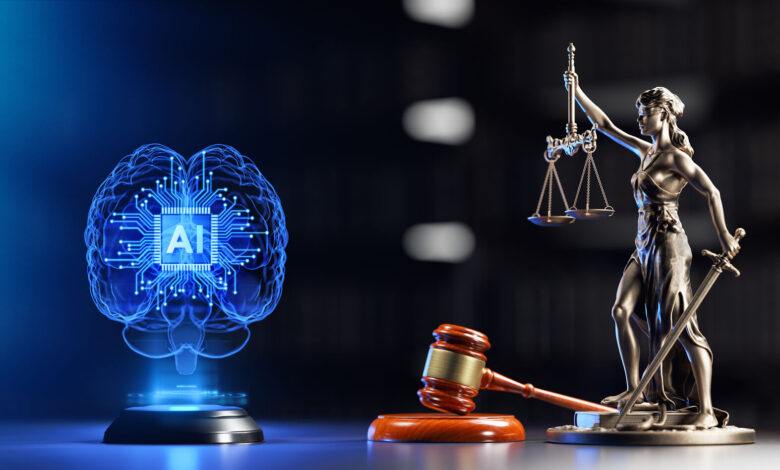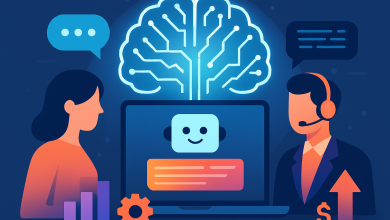
Here at exnaton, we believe we’re not just at a pivotal moment — we’re at a tipping point. The utilities that move first on AI integration will define the market landscape for decades to come.
Artificial intelligence (AI) is set to revolutionize how energy is distributed, billed, and consumed. But many utilities – especially in Europe – still wrestle with outdated IT systems, siloed data, manual operations, and regulatory complexity. The gap between AI’s potential and utilities’ current capabilities is widening and now is the right time to counterfeit this.
With the right digital foundations and strategic focus, energy companies can close that gap and lead the next era of digital transformation.
The Current State: Fragmented Systems in a Rapidly Evolving Landscape
Worldwide, electricity demand is surging, driven by electric vehicles (EVs), heat pumps, and lately also by data centers that provide all the computing power for our AI agents. Yet most utilities rely on on-prem legacy systems and batch-download data lakes.
In Europe, fragmented infrastructures and over 2,000 distribution system operators (DSOs), combined with targets like Fit for 55 and REPowerEU, create modernization challenges. At the same time, Asia is witnessing rapid deployments of renewables and smart grids, driving innovation and growth across the region.
Moreover, alone global electricity demand from data centres for AI is set to more than double by 2030. In the U.S. alone, AI-centred facilities could soon use more power than traditional heavy industries like steel and cement combined. (Datacenter Frontier, The Guardian).
Without fundamental IT modernization, utilities cannot keep pace. From what I’ve seen working with European utilities, the challenge often isn’t awareness — it’s execution. Legacy architecture and procurement cycles delay transformation, even when the business case is clear.
The Opportunity: AI Is a Workflow Game-Changer
AI’s most impactful use cases in energy aren’t futuristic — they’re already reshaping high-value workflows today:
- Billing: AI streamlines meter validation, automates billing workflows, and flags anomalies in real-time.
- Customer Support: Intelligent assistants enhance service and help resolve common queries without human intervention.
- Customer Insights: Smart-meter data processed through AI enables segmentation, personalized communication, and usage modeling — creating real value for both utilities and consumers.
- Forecasting: AI increases the precision of demand and generation predictions, factoring in variables like EV charging patterns, weather data, and distributed renewables which substitutes the outdated standard load profiles that the sector is relying on so heavily.
These aren’t isolated innovations. They’re part of a global shift toward data-driven, AI-powered energy operations. And the utilities able to embrace them will lead the next generation of intelligence – in terms of product innovation, market opportunities and grid stability.
The Problem: Most Utilities Aren’t Ready (Yet)
Despite the excitement, most utilities — especially in Europe — face significant structural barriers to AI adoption. Common challenges include:
- Legacy, on-premise IT systems with limited modularity
- Batch-based data lakes that can’t deliver real-time insights
- Siloed teams and data across billing, grid ops, and customer service
- Workflow digitization that’s only partial or inconsistent
Meanwhile, demand from AI infrastructure and electrification is climbing fast. Without a solid digital foundation, even the most advanced AI tools can’t deliver results. AI isn’t plug-and-play — it’s infrastructure-dependent. Bright Silicon valley minds have even come to the conclusion that most of the new AI tools will be commoditized; you only win the market by integrating AI substantially into your cooperation. To that end, giants like OpenAI are now offering their AI software together with socalled forward deployed engineers, who help enterprises to make best use of the AI tools in integrating them deeply into the existing IT landscape.
Infrastructure: The Foundation for AI-Readiness
To truly harness the power of AI, utilities need more than just sophisticated algorithms — they need a modern, agile digital foundation. This begins with overhauling legacy IT architecture and moving toward cloud-native platforms, modular systems, and real-time data pipelines. Without these, AI simply can’t operate at the speed, precision, or scale the energy system now demands.
Equally critical is the rollout of smart meters and ensuring data interoperability across systems. These are the prerequisites for enabling advanced analytics, accurate billing, and the kind of responsive customer experiences regulators and consumers increasingly expect.
But digital transformation isn’t just a tech upgrade — it requires robust data governance and embedded cybersecurity from day one. As regulations like GDPR, NIS2, and the EU Cyber Resilience Act tighten their grip, ensuring secure and compliant data infrastructure becomes non-negotiable.
Just as importantly, utilities must break down internal silos to unlock unified access to data across customers, the grid, electric vehicles, and distributed energy resources (DERs). Only then can AI be fully leveraged to deliver predictive insights, automate decision-making, and create value across the entire energy ecosystem.
At the same time, new entrants are proving what’s possible. The rise of “neo-utilities” — digital- first energy providers like 1Komma5°, Octopus Energy, Tibber, Cleanwatts, and Enpal — shows how AI-powered infrastructure can deliver smarter, more flexible services. These companies are not just responding to the energy transition; they’re shaping it. With real-time pricing, AI-based consumption optimization, and integrated offerings for solar, storage, and EVs, they empower users to control their energy use while lowering costs and emissions. In doing so, they’re putting pressure on traditional utilities to catch up — and showing what the future of energy could look like.
AI in Billing: From Manual Workflows to Dynamic Revenue Systems
At exnaton we believe that billing is where most utilities will feel the AI impact first – not because AI promises cutting-edge innovations, but because billing today is painfully manual. Regulatory updates, complex tariffs, and error-prone workflows often relying on Excel (yes, Microsoft excel!) make billing a top candidate for automation.
AI enables:
- Real-time validation of billable usage
- Anomaly detection for faulty meters or irregular consumption
- Automated workflows that incorporate regulatory updates and personalized customer data
- Portfolio-wide usage modeling to improve load forecasting and tariff optimization
As time-of-use pricing, prosumer participation, and community energy models become more common, billing complexity increases exponentially. The foundation is to lift billing from one annual data point to a data point every 15 minutes summing up to 35,000 data points a year. On such a foundation, you can implement dynamic pricing incentives that integrate flexibilities (batteries, electric vehicles) in a way into the grid that is a win-win-win situation for energy consumers, utilities and grid operators.
These aren’t theoretical capabilities — they’re being implemented in leading markets right now.
Conclusion: Building the AI-Energised Future
AI is already embedded in today’s energy landscape – but it will only reach full impact when coupled with robust digital foundations.
For me, the question isn’t whether AI will transform the utility sector – it’s who will do it best, and when. Those who act now won’t just keep up. They’ll lead.
The utilities that act now to modernize IT, expand smart metering, adopt real-time cloud architecture, and deploy AI-driven tools will lead the sector by 2035.
Solutions that embed AI across forecasting, dynamic pricing, customer insights, and operations will form the backbone of a more intelligent, responsive energy system.
Those who move early will be the architects of a decarbonized, decentralized, and digital energy future.
Those who wait risk higher costs, tighter regulations, and growing disconnection from the customers they serve at the time when new players (neo-utilities) are entering the market and convince energy consumers with the highest willingness to pay.





